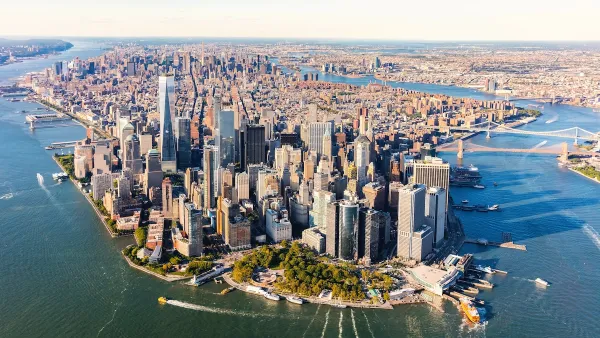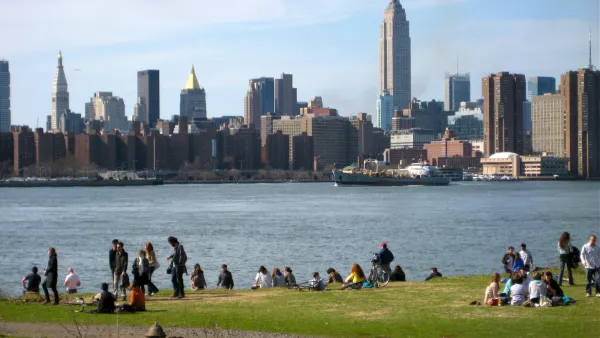According to New York Yimby, Mayor de Blasio's proposed inclusionary zoning policy could do more to protect small market-rate developments, without affordable housing, than it will to create affordable units.
Rebecca Baird-Remba reports on a loophole in a mandatory inclusionary policy announced in July by New York Mayor Bill de Blasio. First, to summarize the policy, Baird-Remba writes that the city "will require market-rate developers to set aside at least 25% of their units in each new building as affordable housing."
The loophole, however: "New buildings with 10 units or less won’t have to abide by the new mandatory affordable rules." That creates a problem in East New York, where the policy will first be rolled out. That's because, according to Baird-Remba, in East New York "virtually all new market-rate construction is three or four-story masonry structures with fewer than 10 apartments."
The reality of the market that, according to Baird-Remba, render the inclusionary zoning policy ineffective on that side of town: "Taller steel-frame buildings cost more to build and are more to challenging to finance, particularly if they have subsidized units. Rents in the area simply aren’t high enough to justify the cost." According to New York YMIBY's archive, in fact, just one market-rate building above that threshold has filed permits in East New York all year long.
The article then explains how the East New York rezoning process will proceed, with a major release expected on September 21.
Sally Goldenberg reported on the critical component of this developing story, Mayor Bill de Blasio's proposal for mandatory inclusionary zoning, at the end of July.
FULL STORY: The Loophole In De Blasio’s New Mandatory Inclusionary Zoning Policy

Analysis: Cybertruck Fatality Rate Far Exceeds That of Ford Pinto
The Tesla Cybertruck was recalled seven times last year.

National Parks Layoffs Will Cause Communities to Lose Billions
Thousands of essential park workers were laid off this week, just before the busy spring break season.

Retro-silient?: America’s First “Eco-burb,” The Woodlands Turns 50
A master-planned community north of Houston offers lessons on green infrastructure and resilient design, but falls short of its founder’s lofty affordability and walkability goals.

Test News Post 1
This is a summary

Analysis: Cybertruck Fatality Rate Far Exceeds That of Ford Pinto
The Tesla Cybertruck was recalled seven times last year.

Test News Headline 46
Test for the image on the front page.
Urban Design for Planners 1: Software Tools
This six-course series explores essential urban design concepts using open source software and equips planners with the tools they need to participate fully in the urban design process.
Planning for Universal Design
Learn the tools for implementing Universal Design in planning regulations.
EMC Planning Group, Inc.
Planetizen
Planetizen
Mpact (formerly Rail~Volution)
Great Falls Development Authority, Inc.
HUDs Office of Policy Development and Research
NYU Wagner Graduate School of Public Service



























